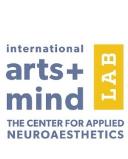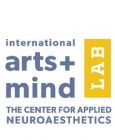Mindfulness
How Museums Can Help Enhance Physical and Mental Health
Innovative programs promote health through art, nature, mindfulness.
Posted June 5, 2024 Reviewed by Lybi Ma
Key points
- Visiting museums can offer many benefits to both physical and mental health.
- Museums can help foster social connections and community engagement, which are integral to mental health.
- Many museums offer well-being programs such as yoga classes, guided mindfulness sessions, or forest bathing.
- By embracing innovative programming, museums can help enhance both individual and collective well-being.
By Karen Alexander, MPA

Visiting museums can offer myriad benefits to health and well-being, encompassing both physical and mental health dimensions. Museums provide opportunities for individuals to engage in leisurely activities that promote relaxation and stress reduction. The serene atmosphere within museum galleries can serve as a sanctuary from the hustle and bustle of daily life, allowing visitors to unwind and recharge mentally. Studies have shown that exposure to art and cultural artifacts can lower levels of cortisol, a stress hormone, leading to improved mood and overall well-being.
Moreover, museums can play a crucial role in fostering social connections and community engagement, which are integral to mental health. Whether through guided tours, workshops, or group activities, visitors have the chance to connect with like-minded individuals and share enriching experiences. These social interactions not only contribute to a sense of belonging but also provide opportunities for personal growth and development.
Many museums have recognized the importance of promoting health and well-being through specialized programs and initiatives. For instance, some museums offer meditation and mindfulness sessions amidst their collections, providing visitors with tools to manage stress and cultivate mindfulness. These programs often incorporate elements of art therapy, leveraging the therapeutic benefits of creative expression to enhance emotional resilience and self-awareness.
Furthermore, many museums have integrated time outside in nature and physical activities into their offerings to promote well-being. Outdoor sculpture gardens and walking tours encourage visitors to engage in moderate exercise while exploring art and nature. Research has shown that spending time in nature can improve mood, boost immune function, and reduce stress levels. Additionally, interactive exhibits that encourage movement and physical interaction can stimulate cognitive function and also promote physical health through playful engagement.
Examples of museum-based well-being initiatives include:
- Weekly programs that promote health while drawing inspiration from a museum's collection and the surrounding community. Participants might enjoy yoga classes held in a museum's galleries, guided meditation sessions amidst artwork, or wellness workshops.
- Guided mindfulness sessions led by experienced instructors within a museum's exhibits, incorporating techniques like deep breathing and sensory awareness to encourage present-moment awareness and relaxation. Following the mindfulness session, participants might embark on a guided tour or interactive activity focused on a topic related to the museum's exhibits, providing visitors with the opportunity to engage in contemplative practices while viewing artwork.
- Forest bathing experiences in partnership with local naturalists and wellness experts, where participants embark on guided walks through a museum’s gardens or nearby natural spaces. Led by trained guides, these walks invite participants to engage in mindfulness practices, such as deep breathing and sensory awareness, while immersed in the sights, sounds, and smells of the forest. The experience emphasizes the connection between humans and the natural world, promoting relaxation, stress reduction, and mental clarity.
Museums and cultural institutions worldwide are implementing innovative programs to promote health and well-being through art, nature, and mindfulness. As institutions continue to evolve and diversify their offerings, they have the potential to play an increasingly significant role in promoting wellness in their communities. By embracing innovative programs and initiatives, museums can serve as valuable resources for enhancing both individual and collective well-being.
Karen Alexander, MPA, is with the International Arts + Mind Lab at Johns Hopkins University


